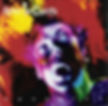Alice In Chains - Facelift
- FaceOff - עימות חזיתי
- Aug 21, 2025
- 4 min read
"Alice In Chains" debut album "Facelift" was released on August 21, 1990 !!!
Do you realize how long it has been since this album came out?
It was released when we were teenagers, and even though so much time has passed, every time we listen to it, we feel like those snub-nosed teenagers again.
No matter how many reviews we write, we're always amazed by how music remains eternal and timeless! As we write about this incredible album, a scene from the Netflix series "Dark" plays in the background. The series strongly conveys that you cannot stop time; no matter how much you try to alter the past, present, or future, time continues to move forward. However, in music, once the needle touches the record or we hit play, it's as if time stands still...

Returning to our topic...
In 1988, the members of "Alice In Chains" released a demo titled "The Treehouse Tapes," which circulated among radio stations until it reached agents Kelly Curtis and Susan Silver. At the time, they managed a new band called "Soundgarden." The duo passed the demo to "Columbia Records," which quickly signed the band to a recording contract in 1989.
During this period, record companies were eager to capitalize on the Seattle music scene, making "Alice In Chains" a top priority for Columbia Records. The band was sent to Seattle's renowned "London Bridge Studio" to start recording their debut album.
To promote the album, Columbia released the band's first EP, "We Die Young." This EP aimed to showcase "Alice In Chains" with the single "We Die Young" and included two additional tracks: "It Ain't Like That" and "Killing Yourself."
Initially, radio stations classified "Alice In Chains" as a pure Heavy Metal band. However, influenced by Glam and Hair Metal, they criticized Layne Staley's deep voice as unsuitable for Heavy Metal, suggesting he needed a higher pitch. The band and record company ignored this criticism, but the fans embraced the single. Its popularity convinced Columbia not to delay the album's release, which happened on August 21, 1990.
The album, led by the song "We Die Young," garnered immense fan admiration. The track "Man In The Box" captivated listeners with its heavy sound, intense lyrics, melodic vocals, and the harmonies of Layne and Jerry Cantrell. Jerry noted that this song marked the band's discovery of their musical direction, defining what Alice In Chains became!
The album is predominantly written by Jerry, and its lyrics explore themes such as drugs, his mother's death, censorship, and a "we against the world" mentality. This album produced several timeless tracks that significantly influenced the music scene at the time and set the stage for the major developments soon to emerge from Seattle.
"Bleed The Freak" bursts forth after a captivating intro, the mesmerizing "Love Hate Love," and "It Ain't Like That," featuring a heavy and intricate riff that perfectly complements Layne's voice, among others.
Initially, the album did not achieve much success, selling only tens of thousands of copies in the first six months. However, the situation changed dramatically once MTV got involved. "Alice" released a music video for "Man In The Box," which MTV embraced and placed in heavy rotation, transforming the album's reception. Following the video release, the album sold 400,000 copies in just six weeks! It became the first album from the grunge scene to reach the top 50 of the Billboard 200 chart, peaking at 42nd place.
The album also earned a Grammy nomination for "Best Hard Rock Performance with Vocal" but was beaten by "Van Halen."
Even the Prince of Darkness himself, Ozzy Osbourne, has ranked it among his top 10 favorite metal albums.
If you were curious about the album cover and wondered whose distorted face it features, let us enlighten you.
Photographer and director Rocky Schenck aimed to depict the band members as if they were emerging or being born from something, symbolizing their debut album's birth. He experimented with various concepts, including having the band members' faces emerge from a pool covered with a plastic sheet. After three days of filming and extensive editing, the final result was a distorted black and white image of bassist Mike Inez's face. Ultimately, Rocky chose to add color, transforming it into a vibrant image. Upon seeing the final result, the band decided to name the album "Facelift".
Finally, we wanted to share some additional intriguing facts about the album:
- Drummer Sean Kinney broke his arm during the album's recording and barely played on it. The band brought in Greg Gilmore's drummer from "Mother Love Bone" to fill in for him. Sean attempted to instruct Greg on how to play, but after a few attempts, they realized it wasn't working. The band took a break, and during that time, Sean's hand improved significantly. When they returned to the studio, he removed the cast and recorded the album with a bucket of ice beside him to alleviate the pain.
- The song "Man In The Box" was influenced by "Bon Jovi" and especially the song "Livin 'on a Prayer" taken from the album "Slippery When Wet". Jerry uses the Talk Box effect that Richie Sambora also used.
- At the end of the last song on the album, "Real Thing" Layne shouts the phrase "Sexual chocolate, baby!". The sentence is taken from the name of a fictional band from the movie "Coming to America" in which Eddie Murphy plays.
Listen to the album on: Spotify, Apple Music









